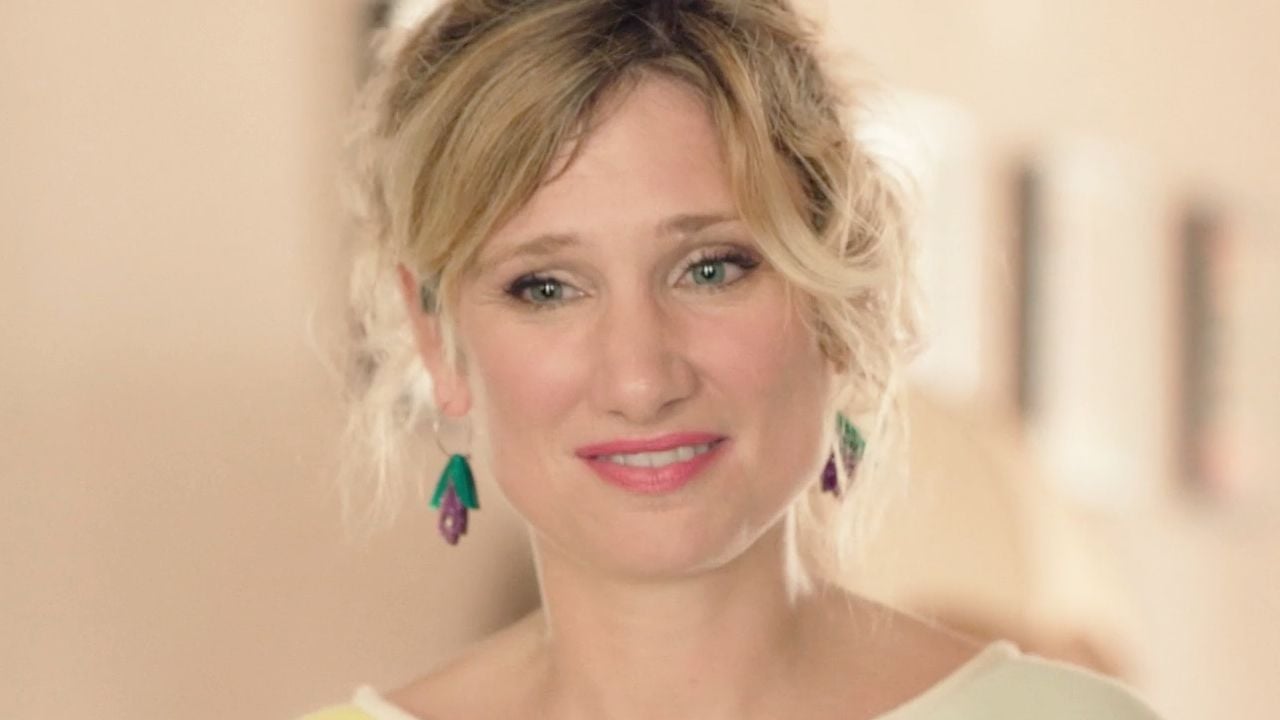Without losing its sexual character, the Netflix adaptation changes the DH Lawrence classic as far as the lover is concerned, and we are glad of it.
As Netflix just released its steamy Emma Corrin-starring adaptation of ‘The Crown,’ the latest in a string of raunchy period dramas, it seems hard to believe this story could be banned for its explicit content and “unprintable” words. However, DH Lawrence’s 1928 novel ‘Lady Chatterley’s Lover’ is inextricably connected with the scandal surrounding its publication, which took 32 years, only landing uncensored on the shelves from 1960 onwards.
With a modern sensibility, Lawrence follows Constance ‘Connie’ Reid, a young woman from a high bohemian circuit who marries the Baron of Wragby, Sir Clifford Chatterley. Their initially happy marriage dries up when he returns from World War I paralyzed from the waist down.
After leaving London for Derbyshire, the lack of privacy affects Lady Chatterley, who is hungry for human contact. Meanwhile, Clifford seems perfectly happy to have her as her nurse on call, but without extending any kind of physical affection.
An affair with the estate’s gamekeeper, Oliver Mellors, sparks Constance’s sexual renaissance and marks the beginning of her quest for independence. An incendiary cross-class affair may not sound as scandalous today as it did nearly a century ago, as this film version of ‘Lady Chatterley’s Lover’ proves.
Faithful to a certain extent to Lawrence, the film by French filmmaker Laure de Clermont-Tonnerre, the second woman to direct this story for the screen, dilutes some aspects of the book to concentrate on the romance between Constance (Corrin) and Mellors (Jack O. ‘Connell). There’s no question this is a love story, just as Mrs. Bolton (Joely Richardson, who played Constance opposite Sean Bean in a 1993 film adaptation) explains in the finale.
Despite dwelling on the feelings that Constance and Oliver develop, the film still relies on the couple’s sexual connection as the core of their tenderness for each other. But intimate moments with Mellors shift the focus to Connie.

In the novel, the protagonist is under her spell, mostly captivated while performing the classic masculine thrust of sex scenes. The film’s horny sequences see a heroine gradually regaining her sexual taste, knowing what makes her “work.”
They both can’t keep their hands off each other, but it’s Connie who often initiates the sex and makes her needs understood. A testament to Corrin and O’Connell’s fiery chemistry, these scenes, however, don’t feel as absorbing as they did in the book.
We may be numbed by the explicit on-screen moments, but the film doesn’t always match the urgent, life-changing quality of Connie’s feelings as described by Lawrence. These steamy scenes are fairly understated, with a muted color gradation that suggests the opposite of the vibrant body explosions both characters should be experiencing.

Fortunately, ‘Lady Chatterley’s Lover’ maintains the almost pagan aspects of their relationship. The scene where Mellors and Connie dance naked in the rain is a joyous, sensual moment, and O’Connell’s beautifully understated performance counterbalances Corrin’s wild, wide-eyed energy.
In this light, it makes sense that the film would change a moment from the novel. Before the adventure begins, Connie examines herself in the mirror after having seen Mellors washing up.
The sight of her yearning body and memories of Mellors’ nakedness have a powerful effect on our heroine, who masturbates before bed. In the book, Connie cries herself to sleep, angry at her husband and other men who have deprived her of “healthy human sexuality.”

The film tweaks the source material, showing that this version of Connie may be less upset with the clash of mind and body that is central to the book, but she isn’t waiting for others to give her what she deserves. However, Lawrence’s novel is not just a mere sexual adventure.
Among its occasional problematic language (racist slurs, casual anti-Semitism, and a few misogynistic incidents, often in relation to Mellors’ ex-wife Bertha), the book includes a complex reflection on class and a scathing critique of industrialization that the film Netflix boils down to sparse lines of dialogue. The author writes of an impoverished and heavily industrialized Derbyshire, with workers squeezed to the last drop by aristocrats, Clifford being one of them.
Putting aside his passion for writing to run his father’s coal mines in the nearby town, the Baron unceremoniously chooses to profit off the backs of his men. A staunch opponent of social mobility, he justifies his actions with a belief in the profound differences between individuals due to their socioeconomic backgrounds.

This subplot is diluted considerably in the film, and it doesn’t get to the roots of a gap that is widening today. Corrin’s idealistic Connie challenges Clifford’s views with words, but the film rarely takes a visual approach to paint this exploitative picture.
In both media, Constance’s affair with Mellors elicits strong reactions due to their class difference. Clifford would have been more lenient with someone of his own rank, as he himself suggests that Connie might get pregnant in an extramarital affair with “the right guy”.
Needless to say, Mellors doesn’t fit this description. Not only because he is working class, but also because he dared to improve his condition, having been a lieutenant during the war.
The film flattens Mellors’ internal class conflict and attempts to pass classes by making him speak in English most of the time, albeit with a heavy northern accent. In the book, the character continually code-switches between Standard English and the Derbyshire dialect, his use of language being inseparable from his social status.
This feature manages to highlight Connie’s hypocrisy, as she sometimes gets annoyed with the use of her lover’s dialect. The Netflix period drama offers a stripped-down, romanticized version of the story, changing the timeline of events and culminating in a slightly but significantly different ending: warning, spoilers follow.

As they both await their divorce (which may prove more difficult for Connie due to Clifford’s stubborn refusal), the two lovers meet again. Mellors now works on a farm in Scotland and writes to Connie, who gets into her sister Hilda’s (Faye Marsay) car to reach him.
Lawrence’s novel ends with a thoughtful letter from Mellors. The final pages offer a glimmer of hope that the two lovers will be reunited soon, but they exist in the beautiful and terrifying limbo of uncertainty.

We can imagine a more thoughtful Mellors here, finally ready to open up to Connie. He touches on the class conflict once more and closes his letter with a sexy and tender nod to her sensual escapades. His sentences ooze a burning desire, though quieter, brimming with expectation. The film retains some of them, but ends with Connie and Oliver’s silent and touching embrace in rural Scotland.
This is a clearer, more satisfying ending than the book’s epilogue, which thrives on the realm of possibility. It lacks that quality of devastating anticipation that makes ‘Lady Chatterley’s Lover’ still resonate with readers today to focus on Connie’s power. Not afraid to get what she wants (or who, in this case), this movie heroine is ready for the fresh start he’s created for her and her knight hers.
‘Lady Chatterley’s Lover’ is now available on Netflix.
Source: Fotogramas
Camila Luna is a writer at Gossipify, where she covers the latest movies and television series. With a passion for all things entertainment, Camila brings her unique perspective to her writing and offers readers an inside look at the industry. Camila is a graduate from the University of California, Los Angeles (UCLA) with a degree in English and is also a avid movie watcher.







